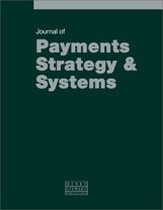Correspondent banking business model: Challenges to reciprocity
Abstract
Reciprocity has always been a major consideration in the payments world, is integral to correspondent banking and, therefore, also to the way in which international payments are made. But this model is coming under direct threat from three directions. First, the model depends on large lines of credit extended by one bank to another, and these are no longer so palatable after the credit crunch. Secondly, banking regulations must increasingly be factored into deliberations that correspondent bankers could previously decide on volumes, values and fees. Thirdly, and most cogently, price and competition — especially in the Single Euro Payments Area (SEPA) — will all but eliminate the correspondent model and supplant it with direct use of infrastructures, but without reducing costs. That could be the worst outcome of all. Outside the SEPA, banks are hamstrung by regulation and by their tie-in to high-cost IT approaches and, indeed, to the use of one another within those models. Inside or outside the SEPA, there simply is not enough money on the table to allow generous reciprocity, and that, combined with credit and regulatory considerations, will change the correspondent discussion from a partner discussion to a buyer/supplier one.
The full article is available to subscribers to the journal.
